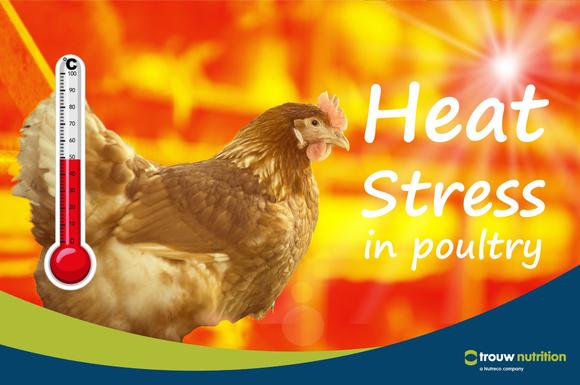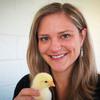Explore all the information on
Poultry welfare
Proper animal welfare involves providing the proper housing, management, nutrition, disease prevention and treatment, responsible care, humane handling and, when necessary, humane euthanasia. These factors allow for the most optimal and humane growing environment. The concept of animal welfare includes three elements: the bird’s normal biological functioning, its emotional state and its ability to express its natural behaviors. Improving animal welfare can be accomplished through offerings like poultry feed enrichment, which can reduce stress, thereby increasing performance, productivity and profitability. Animal welfare is currently a major requirement for intensive poultry production. Beak trimming, stocking density, free access to feed, heat stress, and air pollutants became important issues, which are regulated in several countries. Animal welfare is observed by watching how birds naturally behave and even by looking at mortality stemming from aggressive behaviors.
This award recognizes the achievements of PSA members in the early stages of their career in poultry extension. It is given every other year.
Shawna Weimer
University of Arkansas
Originally from Iowa, Shawna Weimer received her BS and MS degrees in Animal...
Comments : 0
Recommendations: 1
Mohammad Afrouziyeh (University of Alberta / Poultry Innovation Partnership) shares his recommendations and insights on water quality, as well as a new tool to control it, during this Engormix interview....
Comments : 3
Recommendations: 8
While summer spells fun for most of us, it’s a little different for our poultry animals such as broilers and laying hens. High temperatures cause drops in production, dehydration and heat stress which may lead to more problems like foot pad dermatitis, respiratory symptoms, shell quality problems and even death. So let's take extra care to ensure poultry welfare by providing them with easy access to clean water, shade, and proper ventilation to prevent heat exhaustion. Make sure to monitor...
Comments : 0
Recommendations: 1
Tryptophan, Serotonin & Melatonin Tryptophan (Trp) is an essential amino acid (AA), which is the building block of protein, therefore it cannot be synthesized by the body itself and must be obtained through food; it is important for many metabolic functions. Trp supplementation improves...
Comments : 0
Recommendations: 2
The incubation environment is important for embryonic development and programs chick welfare. The focus of this newsletter is on the effects of the incubator environment on chicken egg incubation, but the same principles can apply to other poultry species. For more information on hatchery topics, see our ...
Comments : 0
Recommendations: 2
Most people are very familiar with the severe consequences that heat stress can have on poultry (see our previous newsletter), but cold stress can have severe production and economic consequences as well, leading to reduced egg production, reduced survivability, suppressed development and...
Comments : 0
Recommendations: 1
Edgar O. Oviedo-Rondón, Ph.D., from North Carolina State University (United States) speaks about management practices to overcome male breeders' fertility issues...
Comments : 2
Recommendations: 0
The Poultry Extension Collaborative has finalized the program for the 3rd annual PEC symposium, which will be a virtual event.
Theme: Breeder flock welfare.
Date: May 16th, 2023.
You can register for free here .
...
Comments : 0
Recommendations: 1


Effects of Amino Acids on Immune Responses and Gut Health in Poultry
Suggested link
Piling is an abnormal behavior commonly observed in commercial laying hen flocks. Piling occurs when birds crowd together, usually on top of one another, in a densely packed manner. A piling event may or may not end in smothering. Smothering occurs when one or more birds die due to suffocation from piling. Piling and...
Comments : 1
Recommendations: 0
Human-animal interaction is the mutual and dynamic relationship between a human and an animal where the animal perceives human interaction as degree of relatedness or distance and vice-versa. Human beings have domesticated poultry species for eggs and meat production. Domestication has favored tameness in animals, however,...
Comments : 0
Recommendations: 0
.jpg&w=3840&q=75)

On cherche des distributeurs dans plusieurs pays d’Afrique comme le Kenya, l’Ethiopie, la Tanzanie, le Congo, etc
Suggested link
Brian Fairchild (University of Georgia) talks about common misconceptions regarding this system, possible overuse and its impact on litter conditions and poultry welfare, in this interview during IPPE 2023 in Atlanta, USA....
Comments : 1
Recommendations: 0
American and European companies are pledging to move to include slow-growing broiler chickens for production, which means they will use broiler chickens with less efficient growth rates in their production systems. Slow-growing strains show improved welfare outcomes compared to conventional ones. This newsletter...
Comments : 1
Recommendations: 0


A Natural Choice for Growth Enhancement in Farm Animals - 3 ESSDENDIS
Suggested link
Stefan Eils, Director Sustainability Development at Evonik Animal Nutrition, discusses how Evonik is working on reducing the environmental impact of livestock operations around the world
...
Comments : 1
Recommendations: 1
by Sam Shafer
Is it safer to catch chickens by two legs or one? Poultry scientists show how tweaking catching and transport methods can reduce injuries.
In a recent study, poultry scientists investigated the best way for manually catching chickens in a production setting. The two main ways for manually catching a chicken are the one-legged catch and the two-legged catch. The researchers examined chickens after catching to see...
Comments : 0
Recommendations: 0
by Sam Shafer
A new study of elevated plastic platforms vs. wooden planks suggests turkeys can balance better on the platforms and prefer platforms overall
Poultry scientists work to make sure animal housing is safe—and they research how housing updates might benefit bird health and welfare. For researchers in Switzerland, one important question is whether fattening turkeys (raised for their meat) might benefit from...
Comments : 0
Recommendations: 0
Conventional broiler (meat) chickens reach a final weight of 6.6 lbs (3 kg) in approximately 40-44 days. Across their lifetime, these fast-growing birds gain an average of 68-75 g per day, with daily gain increasing with age (Aviagen, 2022; Cobb, 2022). With their fast growth, however, they...
Comments : 0
Recommendations: 0
Interest in plastic evaporative cooling pads has been steadily increasing since their introduction approximately ten years ago, especially for producers with water quality issues. Though for the most part six-inch plastic pads are interchangeable with six-inch paper pads, and can produce similar cooling, this doesn’t mean there are not significant differences between plastic and paper pads. Not taking into account these potentially important differences can result in an increased...
Comments : 1
Recommendations: 1
Silvia Peris Miras, DVM, Ph.D., Executive Regional Technical Services Manager for Europe, Africa & Middle East at Novus International speaks about the role of zinc, copper, and manganese trace minerals in Breeder Hens...
Comments : 1
Recommendations: 0
Tom Tabler (The University of Tennessee) discusses how to manage poultry litter and effectively use ventilation to avoid health and welfare issues, in this interview during IPPE 2023 in Atlanta, USA....
Comments : 1
Recommendations: 0
The poultry husbandry landscape in the United States is rapidly evolving in response to public concern related to animal welfare. As the production systems become complex and the flock sizes increase, conventional welfare assessment methods can be inadequate. Technology can help us in that regard by reliably...
Comments : 3
Recommendations: 0


.jpg&w=3840&q=75)





.jpg&w=3840&q=75)

















